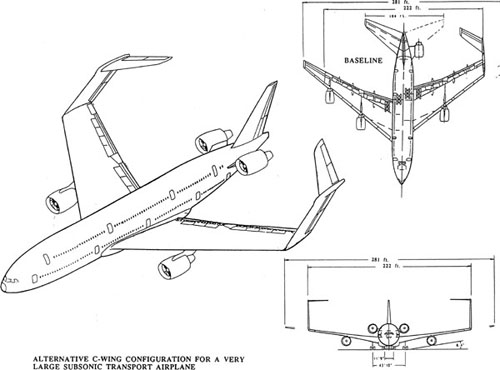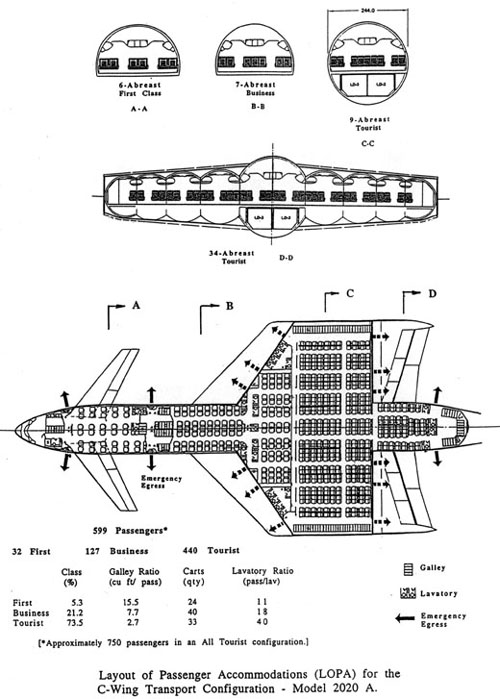

As the number of passengers reaches 600-800, the possibility of including some passenger cabin area inside the wing appears more attractive. For the C-Wing configuration the wing span is reduced and the wing chord increased to maintain the desired lifting area and structural support for the tip surfaces, making this idea even more appealing. Furthermore, when a long empennage is no longer required for horizontal and vertical tail surfaces, one is led to the rather unconventional large aircraft configuration pictured below.
This design comprises a three-surface configuration providing a large allowable c.g. range, with a relatively lightly loaded wing to simplify high-lift system requirements and accommodate passenger cabins in the wing. The vertical and horizontal tip extensions provide an efficient means of satisfying stability and control constraints.

As the design evolved to the tri-jet shown below, the wing span was increased, but remained substantially lower than the conventional design. More efficient use was made of the existing 777 fuselage area and the thick inner wing section was modified based on an investigation of high-speed thick sections.
The basic idea in this conceptual design study was not to obtain the highest performanace for this large aircraft, but rather to provide a feasible solution to the large aircraft problem. The design addresses many of the problems that arise from the simple scaling-up of the conventional design.

The layout of passengers and accommodations (LOPA) for this aircraft is shown below.
By including passenger cabins in the inner wing area, it is possible to accommodate all 600+ passengers (tri-class) in a single deck arrangement. This resolves many of the difficult loading and emergency egress issues associated with double deck cabins. The use of the cylindrical fuselage section of a Boeing 777 keeps most of the passengers near the centerline, provides windows for many, and permits some growth by conventional fuselage stretching.
